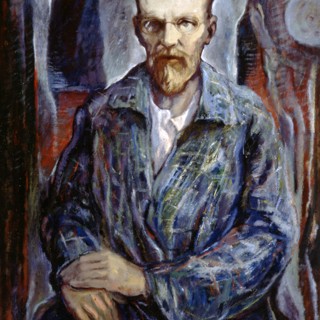
LIFE
Knute Heldner was born to a farming family in Sweden in 1886. At age 12, he joined the Navy. In 1902, poor and somewhat frail, he emigrated to the United States and settled in Minnesota. He worked a variety of odd jobs in the mines and forests, observing the scenes and lifestyles that would later figure in his paintings. When he decided he wanted to pursue art full-time, he enrolled in the Minneapolis School of Art. In 1915, he won a gold medal at the Minnesota State Fair, and was able to begin exhibiting his work.
In 1923, Heldner eloped with Colette Pope, a fellow artist, and went on honeymoon to New Orleans. The family subsequently split their time between New Orleans and Minnesota, where Heldner immersed himself in the social scene. His paintings garnered national and international attention, including from President Harding, and he became known as one of the top 15 artists in the United States. During the Depression, the WPA employed him with Ellsworth Woodward for their Federal Art Project. He had trouble managing money and was never rich, but he established that he painted for the intrinsic value of his work. Heldner also carved wood and wrote plays, stories and art criticism.
Heldner’s health and eyesight declined in his late 70s, but he continued to paint until his death in 1952.
ART
Knute Heldner’s paintings comfortably span a wide range of styles, from impressionist into abstraction. Out of his deep Christian faith and empathetic heart come his touching ‘toil and soil’ scenes, detailing the lives of everyday workers and farmers. His delicate landscapes are also eye-catching. Critics said his work has a ‘savage grandeur’; he painted out of a desire to express his theme and subject, and sacrificed exterior prettiness for this.
RECOGNITION
Knute Heldner’s paintings are displayed in the Smithsonian Institute, the White House, and Paris’ Luxembourg Museum.
Sources:
AskArt
